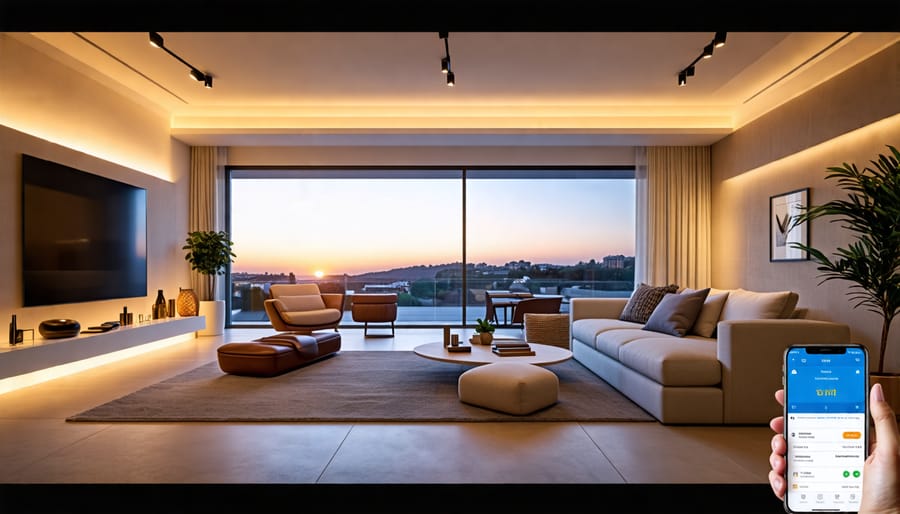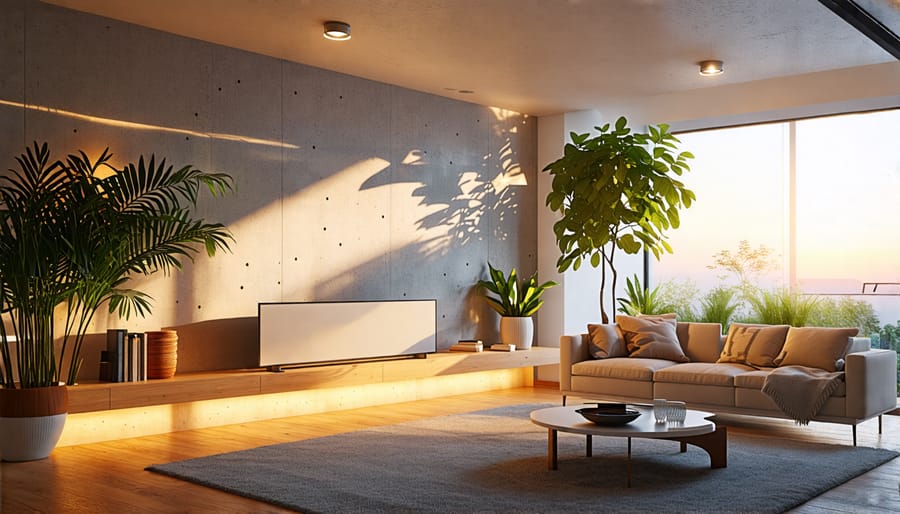
Adaptive Home Lighting: Illuminate Your Space Like Never Before
Transform your living spaces with the power of adaptive lighting – an innovative technology that automatically adjusts illumination based on natural light levels, occupancy, and your personal preferences. By seamlessly integrating sensors, smart bulbs, and intelligent control systems, home adaptive lighting creates an interior environment that is not only visually striking but also tailored to enhance comfort, productivity, and well-being. Whether you’re relaxing in the living room, focusing in your home office, or preparing meals in the kitchen, adaptive lighting ensures you always have the perfect ambiance. Embrace the future of home illumination and experience the remarkable difference adaptive lighting can make in your daily life.
What is Adaptive Lighting?
Circadian Rhythms and Lighting
Circadian rhythms, our body’s natural 24-hour sleep-wake cycle, play a crucial role in regulating our energy levels, mood, and overall well-being. Home adaptive lighting systems are designed to align with these rhythms by automatically adjusting the color temperature and intensity of light throughout the day. In the morning, the system emits cool, bright light to mimic natural daylight, helping you wake up and feel energized. As the day progresses, the light gradually softens and warms, creating a cozy ambiance that promotes relaxation in the evening. By the time you’re ready for bed, the lights have shifted to a warm, low-intensity glow that signals to your body that it’s time to wind down and prepare for sleep. By synchronizing your home’s lighting with your natural circadian rhythms, adaptive lighting can help improve your sleep quality, boost your mood, and enhance your overall well-being.
Smart Technology Integration
Adaptive lighting seamlessly integrates with smart home systems, allowing you to control your lighting from your smartphone, tablet, or voice assistant. By connecting your adaptive lighting to your smart home hub, you can create custom lighting scenes, set schedules, and automate your lighting based on your daily routines or specific events. For example, you can program your lights to gradually brighten in the morning to help you wake up naturally or to dim automatically when you start a movie night. With smart technology integration, you have full control over your home’s ambiance at your fingertips, making it easier than ever to create the perfect atmosphere for any occasion. Plus, many smart lighting systems offer energy-saving features, such as occupancy sensors and daylight harvesting, which can help reduce your energy bills and contribute to a greener home.

Benefits of Adaptive Lighting at Home

Improved Mood and Productivity
Adaptive lighting can have a profound impact on your mood and productivity. By adjusting the color temperature and brightness throughout the day to mimic natural light, it helps regulate your circadian rhythm, leading to better sleep and increased alertness during waking hours. Cool, bright light in the morning can energize you, while warm, dimmer light in the evening promotes relaxation. In home offices, adaptive lighting can create an environment conducive to focus and improved productivity. By optimizing lighting conditions, you can reduce eye strain, enhance concentration, and boost your overall well-being, making your home a more comfortable and efficient space.
Energy Efficiency and Cost Savings
Adaptive lighting can significantly reduce energy consumption and costs in your home. By automatically adjusting light levels based on natural light, occupancy, and your preferences, these systems optimize energy usage. LED bulbs, a common component in adaptive lighting, are highly energy efficient, lasting longer and consuming less power than traditional bulbs. Over time, the combined efficiency of adaptive technology and LED bulbs can lead to notable savings on your electricity bills. Plus, by extending the life of your bulbs, you’ll save money on replacements. Investing in adaptive lighting not only enhances your home’s ambiance but also contributes to a greener, more cost-effective lifestyle.
Implementing Adaptive Lighting at Home
Choosing the Right Fixtures and Bulbs
When choosing adaptive lighting fixtures and bulbs for your home, consider factors like compatibility with your existing setup, ease of installation, and the desired ambiance. Look for fixtures specifically designed for adaptive lighting, such as smart bulbs or LED strips that can change color temperature and brightness. Philips Hue, LIFX, and Nanoleaf offer popular options. Ensure the bulbs are compatible with your preferred control method, whether it’s voice commands, a mobile app, or smart home integration. For a cohesive look, select fixtures that complement your home’s style and color scheme. Don’t forget to consider the light output and energy efficiency of the bulbs to strike a balance between functionality and cost-effectiveness. With careful selection, you can create a personalized and inviting atmosphere in your home using adaptive lighting.
DIY Adaptive Lighting Project
Here’s a simple DIY project for implementing adaptive lighting in your home. First, choose a room or area where you’d like to install the system, such as your living room or bedroom. Next, purchase smart LED light bulbs that are compatible with your home’s Wi-Fi network. These bulbs can be controlled through a smartphone app or voice commands. Install the bulbs in your desired fixtures, following the manufacturer’s instructions. Once installed, download the accompanying app and follow the setup process to connect the bulbs to your Wi-Fi network.
Now comes the fun part – customizing your adaptive lighting. Most apps allow you to set schedules, so your lights automatically adjust throughout the day. For example, you might program the lights to gradually brighten in the morning, mimicking a natural sunrise. In the evening, set them to dim and shift to warmer tones, creating a cozy ambiance. You can also create custom scenes for specific activities, like reading or watching movies.
Experiment with different color temperatures and brightness levels to find what works best for your space and preferences. Don’t forget to consider the room’s natural lighting and any existing light fixtures. With a little trial and error, you’ll soon have a personalized adaptive lighting system that enhances your home’s comfort and style. As you enjoy your new setup, keep an eye out for any updates or new features offered by the smart bulb manufacturer to further optimize your adaptive lighting experience.
Conclusion
Adaptive lighting is a powerful tool for enhancing your home’s ambiance, energy efficiency, and functionality. By harnessing smart technology and customizable lighting schemes, you can create a living space that adapts to your needs and preferences throughout the day. From improved sleep quality to increased productivity and enhanced mood, the benefits of adaptive lighting are numerous and far-reaching.
As we’ve explored, incorporating adaptive lighting into your home is easier than you might think. With a range of smart bulbs, dimmers, and control systems available, you can start small and gradually expand your setup as you become more comfortable with the technology. By following the DIY projects and tips outlined in this article, you’ll be well on your way to creating a personalized adaptive lighting system that transforms your home.
So why not give it a try? Start experimenting with different lighting scenes, color temperatures, and intensities to find what works best for you. With a little creativity and effort, you’ll soon discover the incredible potential of adaptive lighting to elevate your living space and improve your daily life.
